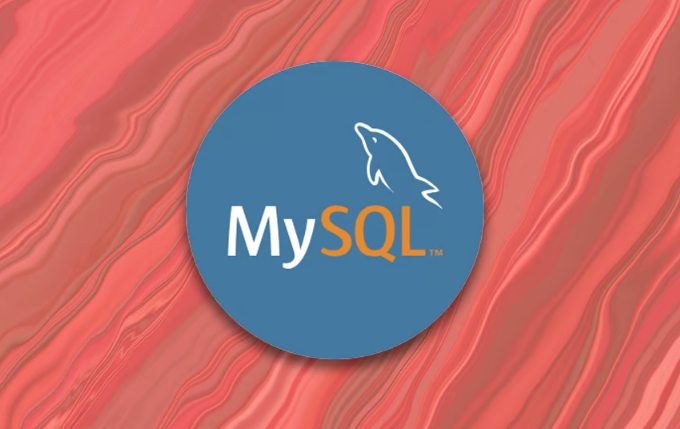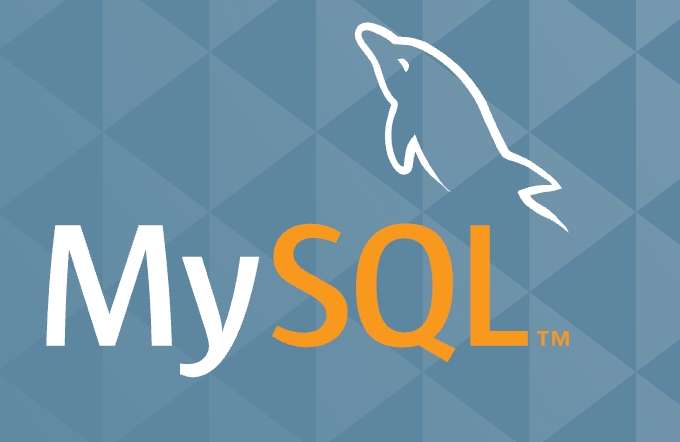MySQL itself does not support the Serverless architecture, but cloud manufacturers such as AWS and Alibaba Cloud have launched Serverless MySQL products, which can automatically scale and on-demand billing by encapsulating underlying resources. Suitable scenarios include: 1. Applications with large fluctuations in access volume, which can automatically expand and save resources; 2. Small project or MVP prototype development to reduce initial cost and operation and maintenance complexity; 3. Event-driven applications, coordinated with function calculation to achieve elastic access. When using it, you need to pay attention to cold start delay, concurrency restrictions, long-term high load costs and cross-region delay issues. Compatibility, scaling strategy, cold start time, cost transparency and operation and maintenance functions should be evaluated when selecting a plan.

MySQL is not a database that naturally supports Serverless architecture, but with the development of cloud services, some manufacturers (such as AWS, Alibaba Cloud, etc.) have launched products in the form of "Serverless MySQL". These products enable automatic scaling and billing on demand by encapsulating underlying resource management, allowing developers to focus more on business logic rather than infrastructure maintenance.

If you are considering using Serverless MySQL or want to know the scenarios it applies to, here are some practical information and suggestions.
What is Serverless MySQL?
The so-called "Serverless MySQL" does not mean that there is no server, but that you do not need to care about the configuration, expansion, maintenance and other issues of the underlying server. The cloud platform will automatically process these tasks and dynamically allocate and bill resources based on actual usage (such as the number of connections, query volume, storage space, etc.).

Common examples include:
- AWS Aurora Serverless
- Alibaba Cloud PolarDB Serverless
- On-demand instances of Google Cloud SQL (although not completely Serverless, but have similar features)
This type of database is usually compatible with the native MySQL protocol and has a low migration cost.

Suitable for Serverless MySQL scenarios
1. Applications with large fluctuations in visits
If your application traffic is unstable, such as only a few hours of peak hours a day, or some functional modules are called occasionally, then traditional fixed-specification databases can easily cause resource waste or performance bottlenecks.
Using Serverless MySQL can do:
- Automatic expansion
- Pay by actual use
- No need to estimate the peak capacity
For example: an e-commerce promotion system has almost no access to it during non-promotion periods, but it suddenly surges during a big promotion. At this time, the Serverless database can respond well to this change of demand.
2. Small project or MVP prototype development
For start-up projects, internal tools, or individual projects, there may not be much budget to maintain the database cluster in the early stage. Serverless MySQL provides a low-threshold access method:
- No need to buy an instance in advance
- Billed by quantity, cost controllable
- Simple management, saving operation and maintenance time
This model is particularly suitable for products in the early stage of verification, and it is not too late to migrate to the standard architecture after the scale is increased.
3. Event-driven application
For example, applications built on function calculations (such as AWS Lambda and Alibaba Cloud function calculations), each request may trigger database operations, but the overall load is not high and uncertain.
Under this architecture:
- The database should be able to respond quickly to short-term and high-frequency access
- Avoid fees caused by long-term idleness
- Supports elastic connection and concurrent control
Serverless MySQL can work well with this type of serverless backend architecture.
Issues to note when using Serverless MySQL
Although convenient, Serverless MySQL is not suitable for all scenarios. Here are a few things to note:
- Cold startup delay : If the database is not accessed for a long time, it may enter a dormant state, and there will be a certain delay in wake-up again.
- Maximum concurrency limit : Different cloud vendors have different upper limits on the number of connections and QPS, which may affect performance.
- Long-term high load costs are not necessarily lower : if your application is running at full capacity, traditional reserved instances are more cost-effective.
- Cross-region access latency : Some Serverless databases cannot be deployed on the local VPC, and network latency must be evaluated clearly.
How to choose the right Serverless MySQL solution?
If you decide to try, you can evaluate it from the following aspects:
- Is it compatible with the currently used MySQL version?
- Is the automatic scaling strategy flexible? Can the minimum/maximum capacity be set?
- Is the cold start time acceptable?
- Is the cost model transparent? Are there any hidden fees?
- Are there any functions such as logging, monitoring, and backup?
You can start with small-scale testing, observe the performance in actual use, and then decide whether to adopt it on a large scale.
Basically that's it. Serverless MySQL is a trend, especially suitable for lightweight, highly volatile or fast iterative projects. Although there are still some limitations, its flexibility and cost advantages are attracting more and more developers.
The above is the detailed content of MySQL Serverless Architectures and Use Cases. For more information, please follow other related articles on the PHP Chinese website!

Hot AI Tools

Undress AI Tool
Undress images for free

Undresser.AI Undress
AI-powered app for creating realistic nude photos

AI Clothes Remover
Online AI tool for removing clothes from photos.

Clothoff.io
AI clothes remover

Video Face Swap
Swap faces in any video effortlessly with our completely free AI face swap tool!

Hot Article

Hot Tools

Notepad++7.3.1
Easy-to-use and free code editor

SublimeText3 Chinese version
Chinese version, very easy to use

Zend Studio 13.0.1
Powerful PHP integrated development environment

Dreamweaver CS6
Visual web development tools

SublimeText3 Mac version
God-level code editing software (SublimeText3)
 Handling NULL Values in MySQL Columns and Queries
Jul 05, 2025 am 02:46 AM
Handling NULL Values in MySQL Columns and Queries
Jul 05, 2025 am 02:46 AM
When handling NULL values ??in MySQL, please note: 1. When designing the table, the key fields are set to NOTNULL, and optional fields are allowed NULL; 2. ISNULL or ISNOTNULL must be used with = or !=; 3. IFNULL or COALESCE functions can be used to replace the display default values; 4. Be cautious when using NULL values ??directly when inserting or updating, and pay attention to the data source and ORM framework processing methods. NULL represents an unknown value and does not equal any value, including itself. Therefore, be careful when querying, counting, and connecting tables to avoid missing data or logical errors. Rational use of functions and constraints can effectively reduce interference caused by NULL.
 Performing logical backups using mysqldump in MySQL
Jul 06, 2025 am 02:55 AM
Performing logical backups using mysqldump in MySQL
Jul 06, 2025 am 02:55 AM
mysqldump is a common tool for performing logical backups of MySQL databases. It generates SQL files containing CREATE and INSERT statements to rebuild the database. 1. It does not back up the original file, but converts the database structure and content into portable SQL commands; 2. It is suitable for small databases or selective recovery, and is not suitable for fast recovery of TB-level data; 3. Common options include --single-transaction, --databases, --all-databases, --routines, etc.; 4. Use mysql command to import during recovery, and can turn off foreign key checks to improve speed; 5. It is recommended to test backup regularly, use compression, and automatic adjustment.
 Calculating Database and Table Sizes in MySQL
Jul 06, 2025 am 02:41 AM
Calculating Database and Table Sizes in MySQL
Jul 06, 2025 am 02:41 AM
To view the size of the MySQL database and table, you can query the information_schema directly or use the command line tool. 1. Check the entire database size: Execute the SQL statement SELECTtable_schemaAS'Database',SUM(data_length index_length)/1024/1024AS'Size(MB)'FROMinformation_schema.tablesGROUPBYtable_schema; you can get the total size of all databases, or add WHERE conditions to limit the specific database; 2. Check the single table size: use SELECTta
 Handling character sets and collations issues in MySQL
Jul 08, 2025 am 02:51 AM
Handling character sets and collations issues in MySQL
Jul 08, 2025 am 02:51 AM
Character set and sorting rules issues are common when cross-platform migration or multi-person development, resulting in garbled code or inconsistent query. There are three core solutions: First, check and unify the character set of database, table, and fields to utf8mb4, view through SHOWCREATEDATABASE/TABLE, and modify it with ALTER statement; second, specify the utf8mb4 character set when the client connects, and set it in connection parameters or execute SETNAMES; third, select the sorting rules reasonably, and recommend using utf8mb4_unicode_ci to ensure the accuracy of comparison and sorting, and specify or modify it through ALTER when building the library and table.
 Aggregating data with GROUP BY and HAVING clauses in MySQL
Jul 05, 2025 am 02:42 AM
Aggregating data with GROUP BY and HAVING clauses in MySQL
Jul 05, 2025 am 02:42 AM
GROUPBY is used to group data by field and perform aggregation operations, and HAVING is used to filter the results after grouping. For example, using GROUPBYcustomer_id can calculate the total consumption amount of each customer; using HAVING can filter out customers with a total consumption of more than 1,000. The non-aggregated fields after SELECT must appear in GROUPBY, and HAVING can be conditionally filtered using an alias or original expressions. Common techniques include counting the number of each group, grouping multiple fields, and filtering with multiple conditions.
 Implementing Transactions and Understanding ACID Properties in MySQL
Jul 08, 2025 am 02:50 AM
Implementing Transactions and Understanding ACID Properties in MySQL
Jul 08, 2025 am 02:50 AM
MySQL supports transaction processing, and uses the InnoDB storage engine to ensure data consistency and integrity. 1. Transactions are a set of SQL operations, either all succeed or all fail to roll back; 2. ACID attributes include atomicity, consistency, isolation and persistence; 3. The statements that manually control transactions are STARTTRANSACTION, COMMIT and ROLLBACK; 4. The four isolation levels include read not committed, read submitted, repeatable read and serialization; 5. Use transactions correctly to avoid long-term operation, turn off automatic commits, and reasonably handle locks and exceptions. Through these mechanisms, MySQL can achieve high reliability and concurrent control.
 Connecting to MySQL Database Using the Command Line Client
Jul 07, 2025 am 01:50 AM
Connecting to MySQL Database Using the Command Line Client
Jul 07, 2025 am 01:50 AM
The most direct way to connect to MySQL database is to use the command line client. First enter the mysql-u username -p and enter the password correctly to enter the interactive interface; if you connect to the remote database, you need to add the -h parameter to specify the host address. Secondly, you can directly switch to a specific database or execute SQL files when logging in, such as mysql-u username-p database name or mysql-u username-p database name
 Managing Character Sets and Collations in MySQL
Jul 07, 2025 am 01:41 AM
Managing Character Sets and Collations in MySQL
Jul 07, 2025 am 01:41 AM
The setting of character sets and collation rules in MySQL is crucial, affecting data storage, query efficiency and consistency. First, the character set determines the storable character range, such as utf8mb4 supports Chinese and emojis; the sorting rules control the character comparison method, such as utf8mb4_unicode_ci is case-sensitive, and utf8mb4_bin is binary comparison. Secondly, the character set can be set at multiple levels of server, database, table, and column. It is recommended to use utf8mb4 and utf8mb4_unicode_ci in a unified manner to avoid conflicts. Furthermore, the garbled code problem is often caused by inconsistent character sets of connections, storage or program terminals, and needs to be checked layer by layer and set uniformly. In addition, character sets should be specified when exporting and importing to prevent conversion errors






